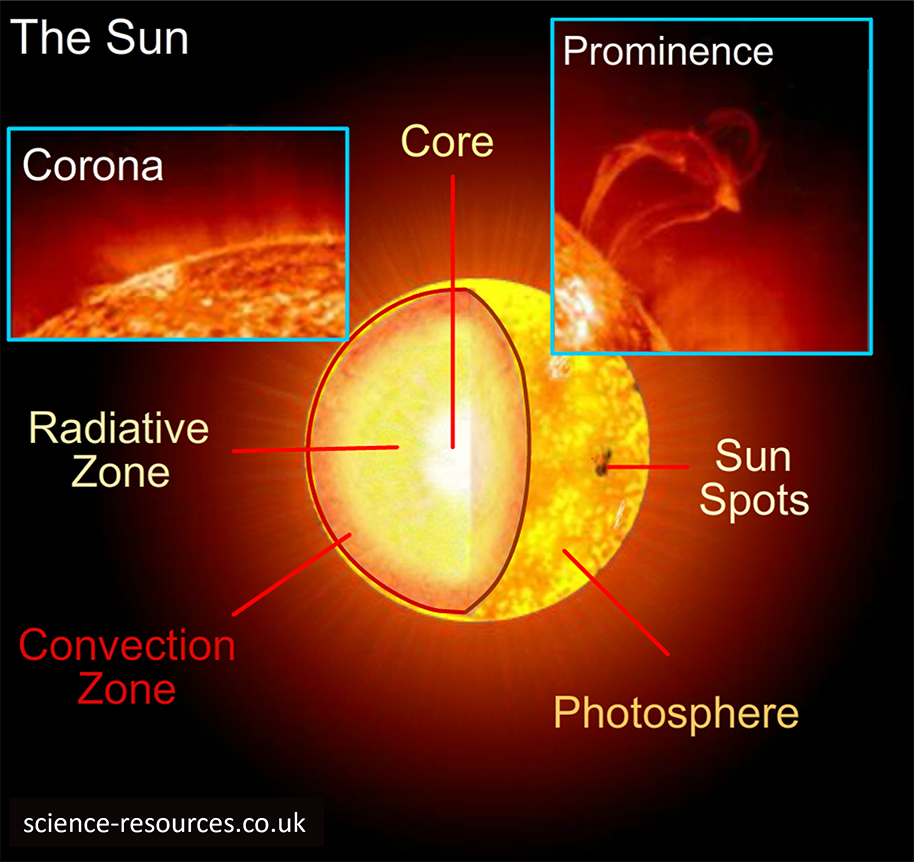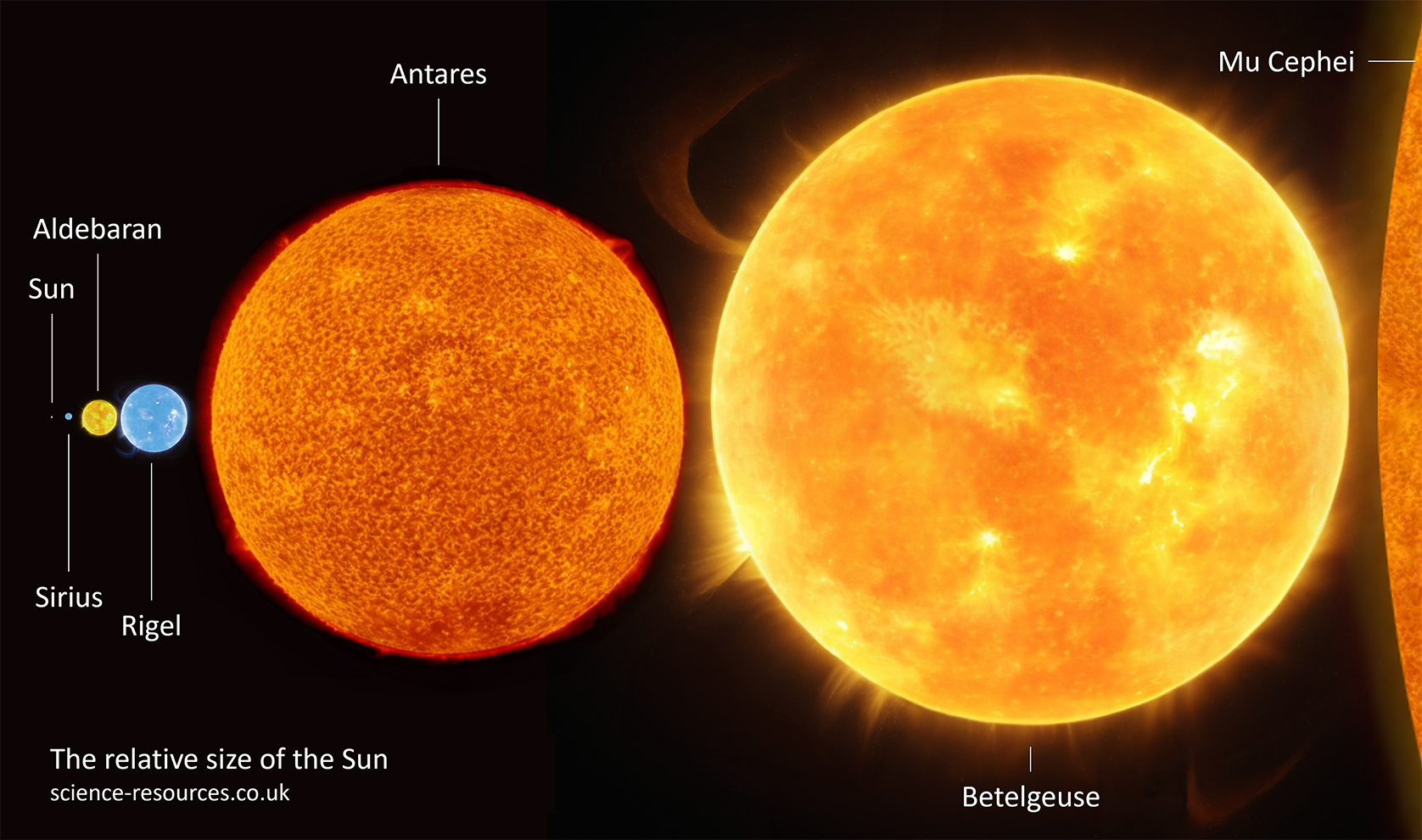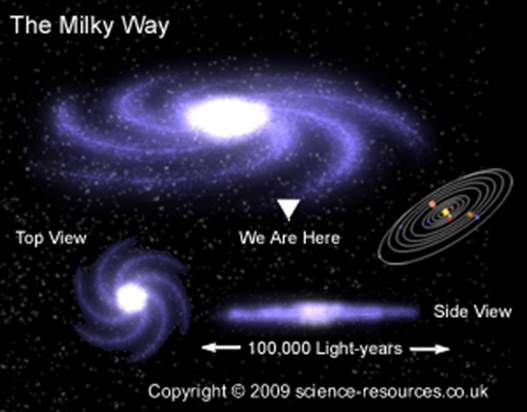The Sun
Stars The actual number of stars in the night sky is much more than you could ever see. The European Space Agency (ESA) estimate that there are about 100 billion stars in the Milky Way alone. According to Brian Greene (theoretical physicist), if you were to hold your thumb up to the night sky at arms length, you are estimated to be covering around 10 million galaxies. The Sun In this image, our Sun is just a tiny dot compared to the giant and supergiant stars.
When you look at the night sky, you can see many thousands of stars with just your eyes. You can see even more with a pair of binoculars or a small telescope.
Different types of star differ a lot in brightness, size, mass and colour. Each star goes through various stages that change their properties, as they move through their lifecycle.
The Sun is our closest star and a type of star called a yellow dwarf. It is at the centre of our solar system. The Sun looks bigger and brighter than other stars because it is much closer to us, even though it is only a medium sized star. The largest stars are more than 100 times as massive as the Sun, and the smallest stars are less than one tenth as massive as the Sun.

Galaxies The Milky Way is just one of many millions of galaxies in the Universe. Some of the galaxies are so far away that they appear in the sky as small fuzzy points of light.
The Sun is one of about 100 billion stars in our galaxy, the Milky Way. The Milky Way is a type of galaxy that has a spiral shape, like the one shown in the image below.
Summary: